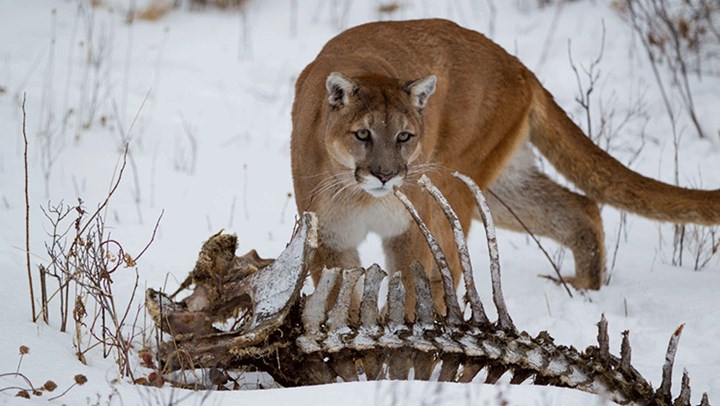
by Phil Phillips - Friday, July 29, 2016

Here we go again: trying to fix a wildlife management problem by using predators. The University of Washington just released a study saying the reintroduction of mountain lions could be a good way to help control whitetail deer populations on the East Coast. As someone who lives out West, I can tell you from experience that mountain lions certainly can control a deer population—to the point of having a non-huntable population. Colorado, for example, strictly controls the harvesting of lions. In recent years, the state’s mountain lion population has grown dramatically. Now the deer population is down dramatically—and, as acknowledged by Colorado Parks and Wildlife, human-lion encounters across the Centennial State are on the rise.
According to the Outdoor Hub and New York Times, this latest university study cites there are more than 1.2 million automobile-deer collisions each year, resulting in 200 deaths and $1.66 billion in damages. So instead of creating more and better hunting opportunities to control deer populations, the report suggests plugging in mountain lions where they currently do not exist. Not only would this create a danger to the human population but it would create its own list of wildlife management concerns. The study calculates that one cat kills 266 deer in its lifetime. That will certainly impact a deer population. But like wolves, these opportunistic feeders won't stay where you put them and undoubtedly will spread into areas where there are no overpopulation problems. And then what?
“We agree with what critics of the proposal have said, which is that cost-effective measures such as hunting already exist,” said NRA’s Susan Recce, director of NRA-ILA Conservation, Wildlife and Natural Resources. “The added bonus: Hunting license fees are used to protect the future of wildlife and account for the primary source of funding for most state wildlife conservation efforts.”
Headed by university scientist Laura R. Prugh, the study analyzed scenarios in 19 states, ultimately excluding Delaware, Illinois, Maryland and Rhode Island for having insufficient habitat to sustain viable populations. While Prugh and her colleagues realize many people would not support the use of lions, a 2015 study by the University of Minnesota and Southern Illinois University Carbondale reports the cats already may be moving east. Regardless of how the cats get there, Prugh says the number of human lives lost due to mountain lions would be far fewer than the number of lives saved through a resulting drop in vehicle-deer collisions.
For Safety's Sake
With increasing reports of lion encounters in mountain subdivisions, urban fringes and open areas across out West, the Colorado Parks and Wildlife website offers precautions for living among these predators. The most recent highly publicized encounter occurred on June 17 when a young boy was attacked near Aspen. Upon hearing the boy scream, his mother said she ran out and "physically removed her son from the mountain lion."
E-mail your comments/questions about this site to:
[email protected]
Proudly supported by The NRA Foundation and Friends of NRA fundraising.
